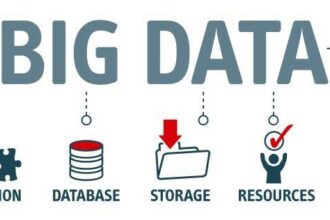TensorFlow is an open source system from Google applied for large scale machine learning processes for deep insights. This open source software library is used for numerical computations with the help of data flow graphs. TensorFlow was originally developed by the Google Brain team for its research and production purposes on its own products and later it was released under the Apache 2.0 open source license in November, 2015.
TensorFlow is an open source system from Google applied for large scale machine learning processes for deep insights. This open source software library is used for numerical computations with the help of data flow graphs. TensorFlow was originally developed by the Google Brain team for its research and production purposes on its own products and later it was released under the Apache 2.0 open source license in November, 2015.
If you’ve tried the new Google Photos app, I am sure you must be amazed by the depth of its artificial intelligence. It uses TensorFlow to recognize places based on their characteristics and landmarks. Google also uses its artificial intelligence (AI) system to recognize spoken words, translate from one to another language, and to improve Internet search results.
TensorFlow: Open source machine learning
TensorFlow Unleashed
Enterprises with big data need a machine learning system with ease of expression for lots of ML ideas and algorithms along with scalability to run experiments quickly. Portability is also one of the main concerns for the enterprises to carry out their big data experiments on a wide variety of platforms. Businesses also need reproducibility of system to make it easy to share and reproduce research. Also, a machine learning system should have production readiness capability to develop real products. An advanced system with all these capabilities can provide a cutting edge to solve complex business problems with deeper and clear insights.
The big tech giants such as Facebook, Microsoft, and Yahoo have already open sourced their artificial intelligence (AI) frameworks that can run on multiple servers. Therefore, we can say that deep learning has become central to the machine learning implementation process. There are many alternatives but TensorFlow is already a popular system for deep machine learning proven by Google on many of its widely recognized products such as Google search, Google Photos, and Google Translate. Artificial intelligence (AI) has become quite smart with the advanced open source software. Let’s scroll down to explore the main advantages that enterprises can have with TensorFlow.
Top 5 Advantages of TensorFlow:
1. Flexibility: You need to express your computation as a data flow graph to use TensorFlow. It is a highly flexible system which provides multiple models or multiple versions of the same model can be served simultaneously. The architecture of TensorFlow is highly modular, which means you can use some parts individually or can use all the parts together. Such flexibility facilitates non-automatic migration to new models/versions, A/B testing experimental models, and canarying new models.
2. Portability: TensorFlow has made it possible to play around an idea on your laptop without having any other hardware support. It runs on GPUs, CPUs, desktops, servers, and mobile computing platforms. You can deploy a trained model on your mobile as a part of your product, and that’s how it serves as a true portability feature.
3. Research and Production: It can be used to train and serve models in live mode to real customers. To put it simply, rewriting codes is not required and the industrial researchers can apply their ideas to products faster. Also, academic researchers can share codes directly with greater reproducibility. In this way it helps to carry out research and production processes faster.
4. Auto Differentiation: It has automatic differentiation capabilities which benefits gradient based machine learning algorithms. You can define the computational architecture of your predictive model, combine it with your objective function and add data to it- TensorFlow manages derivatives computing processes automatically. You can compute the derivatives of some values with respect to some other values results in graph extension and you can see exactly what’s happening.
5. Performance: TensorFlow allows you to make the most of your available hardware with its advanced support for threads, asynchronous computation, and queues. Just assign compute elements of your TensorFlow graph to different devices and let it manage the copies itself. It also facilitates you with the language options to execute your computational graph. TensorFlow iPython notebook helps in keeping codes, notes, and visualization in a logically grouped and interactive style.
In the end, we can say that machine learning (ML) serves as a key ingredient when it comes to improving the efficiency of various existing technologies. Talk to us to know more about how TensorFlow can benefit your business.
The post Tensorflow – Google’s artificial intelligence system for large scale machine learning appeared first on Softweb Solutions.










